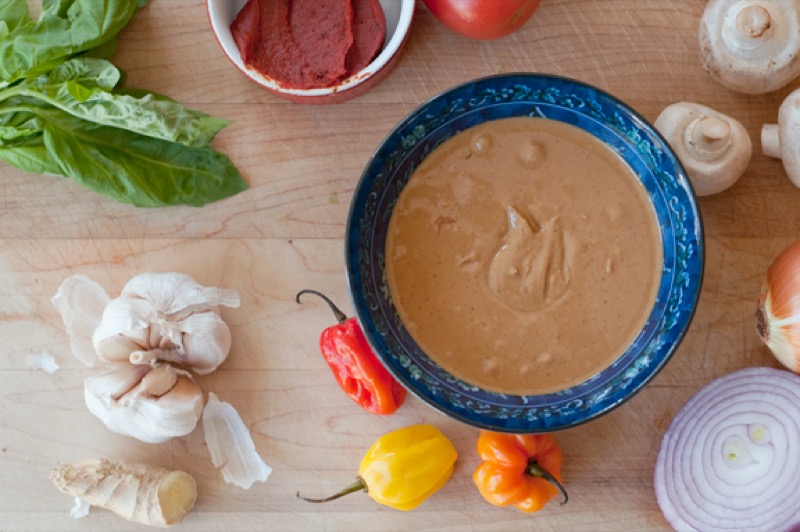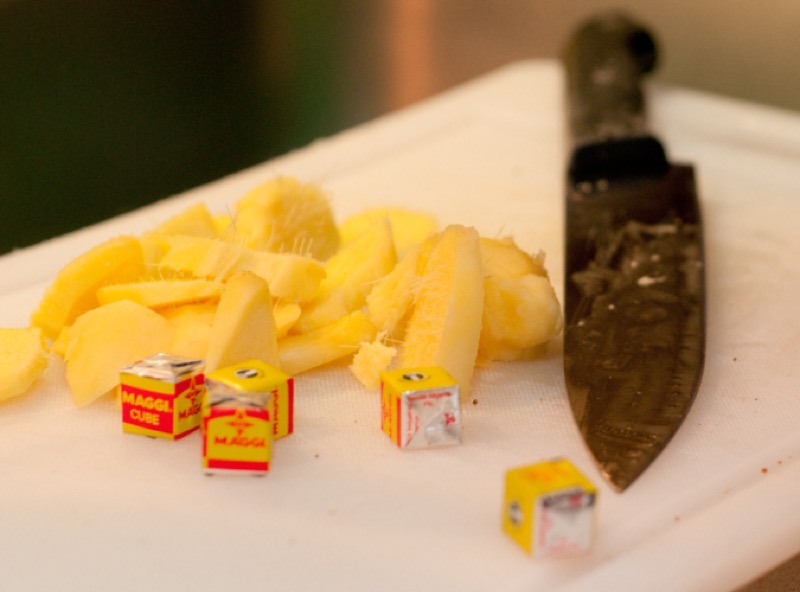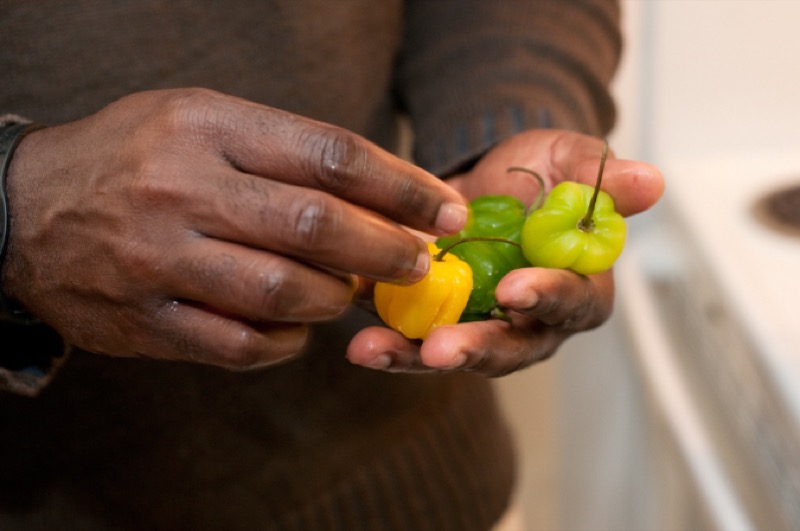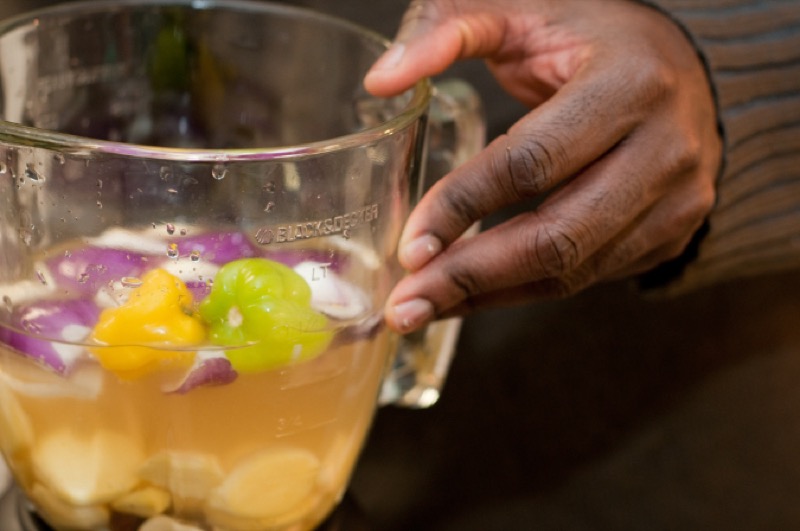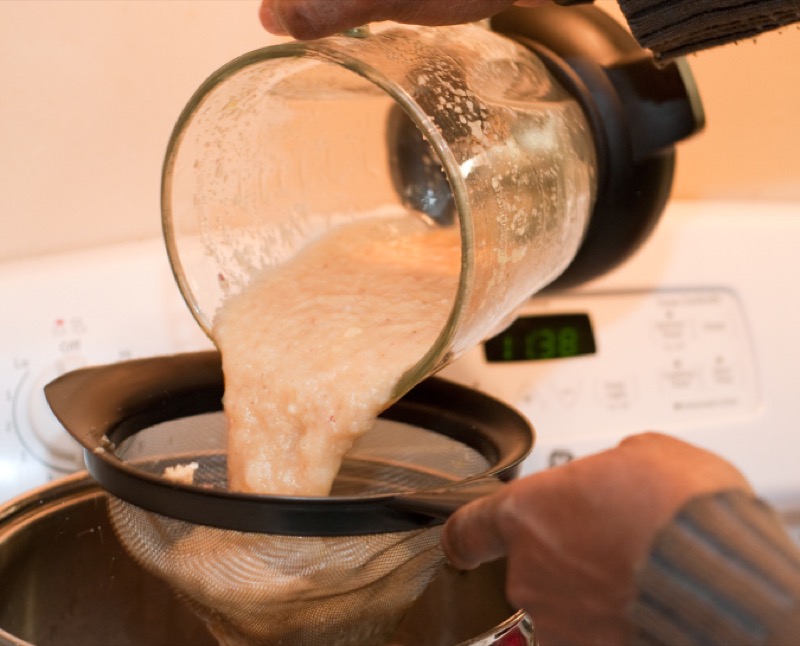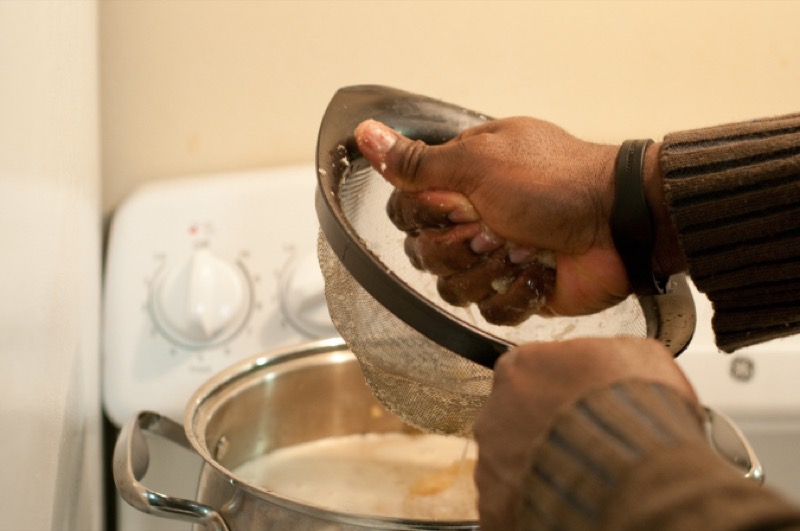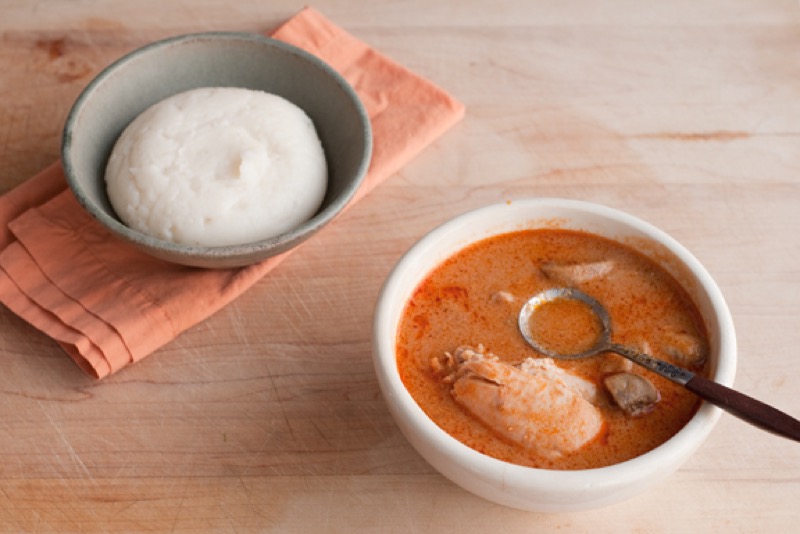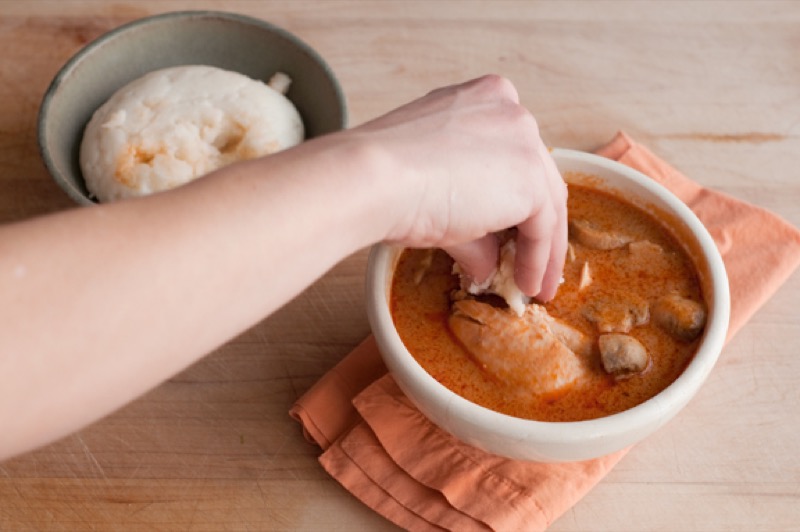Sombe and Bugali
As Alain Bitariho and Mia Ntahobari from Bujumbura, Burundi, taught Lindsay Sterling.
Note: Sombe (pronounced sahm BAY) are the greens, and bugali (pronounced boo GAH lee) is the white starch that's similar to polenta. The greens, chopped cassava leaves, can be toxic if not boiled for a minimum of 1.5 hours.
Serves: 12-16
Cooking Time: 3 hours (plus 8 hours soaking beans the day before)
Ingredients
From an African market such as Ebenezer, 654 Congress Street, Portland, ME:
- 1 lb. frozen chopped cassava leaves
- 2 lb. bone-in goat meat, cut into 2” chunks*
- 1 bag pre-cooked corn flour such as GOYA Masarepa (or 3 cups white rice)
- 1 pound canary beans (substitute any kind of mid-sized dried bean)
- 1/2 tsp Goya Sazonador Total
- bottle Akabanka oil
From the regular grocery store:
- 1 green pepper, large dice
- 1 eggplant, cubed
- 1 + 1/4 onion, large dice
- 2 leeks, quartered lengthwise and sliced across
- 2 + 2 bouillon cubes
- 1/2 cup + 1/3 cup vegetable oil
- 4-5 garlic cloves, minced
- 1/2 tsp dried basil
- 1/2 + 1 tsp black pepper
- 1/4 tsp curry powder
- 2 bay leaves
- 16 oz. tomato paste
- 1/4 cup peanut butter
Instructions
1. The night before, cover beans with water by 2 inches and soak over night. Drain and cover again with fresh water by 1 inch. Bring to a boil and then simmer for about an hour or as long as it takes for the beans to become tender.
2. Put cassava leaves in large pot on high with 4 cups of water, two chunks of goat meat, and two bouillon cubes. Simmer covered for 3 hours.
3. Put the rest of the goat meat in a medium pot (with lid). Add enough water to not quite cover the meat all the way and 2 bouillon cubes, and cook on high with the lid on. Cook until the meat is brown.
4. When cassava leaves become fragrant, add cubed eggplant, green pepper, onion and leeks, and enough hot water so that it comes just under the vegetable tops. Add bay leaves, Sazonador Total, black pepper, garlic, and cook covered on medium high heat.
5. When goat meat is brown, strain the broth into a container for later use, and add 1/3 cup oil so that the oil is half way up the meat pieces. Add 1/4 onion, minced, black pepper, 1/2 tsp basil, bay leaf and curry powder.
6. After cassava cooks for fifteen minutes, add 1/2 cup vegetable oil. Continue cooking covered on medium high for another 2 1/2 hours, adding cups of water periodically to keep it somewhere between a soup and a solid. In the end, you don’t want it watery, but very moist.
7. When goat is getting darker brown and fried and 16 oz. tomato paste to goat and let cook for ten minutes, stirring to create a thick, red, pasty sauce. Stir in 1-2 cups of the reserved goat broth to loosen the paste into a bright red sauce. Turn off heat.
8. When the cassava has cooked for 2:45, then reheat the goat and pour most of the sauce into the cassava, keeping the goat pieces from falling into the cassava pot. Stir peanut butter to the cassava leaves. Cook for fifteen minutes more. Add more broth if you have it to extend the sauce in the goat pot.
9. You can make white rice or a thick style polenta called bugali to go with this dish (also called foufou in other African languages.) To make thebugali, bring water in a medium nonstick pot to a boil. Split water into two pots. Pour enough corn flour into the 1st pot (still on the heat) to reach the surface of the water. Stir with a wooden spoon, mashing the corn flour against the sides of the pot continuously. Add water from the 2nd pot only if the corn flour remains dry and uncooked. When the corn mixture becomes bouncy and pulls away from the pot in a single mass, it’s ready. Press the bugali evenly into the bottom of the pot, then overturn the pot so the bugali falls onto a plate. Sprinkle water on another dinner plate and use the wet plate to press the sides of the polenta into a smooth mound.
10. Serve a 1-inch thick slice of bugali on each plate (or a serving spoon of white rice) with along with piles of cassava leaves (called sombe), goat meat with sauce, and boiled beans. Top with 2-3 drops of super spicy Akabanga oil.






















